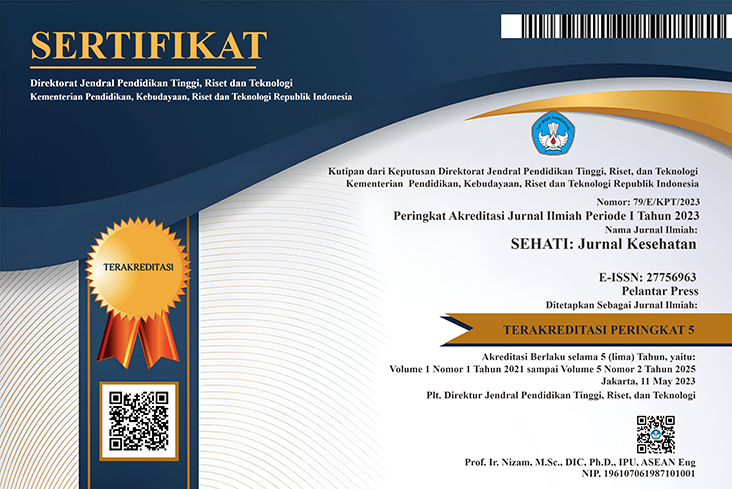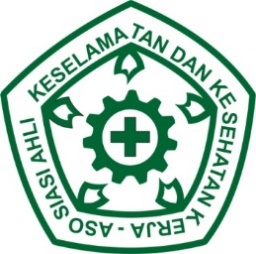Ethnobotanical and ecological study of medicinal plants of mangroves in Siak District, Riau Province, Indonesia
Abstract
The mangrove forest in Kayu Ara Permai Village, Sungai Apit, Siak Regency, Riau Province, Indonesia, is a mangrove forest managed by the local community as the "Historic River" Mangrove Ecotourism Area. Mangrove forests have become a tourist attraction for many local and national tourists. The purpose of this study was to identify plants that have potential as medicinal plants in mangrove ecotourism areas of "Sungai Bersejarah" Kayu Ara Permai Village, Sungai Apit, Siak Regency, Riau Province. This study used a survey method in mangrove forests to conduct an inventory of the medicinal plants scattered throughout the area. Observations were made using a combination of the path and plot methods. The investigation was carried out by cross-checking the traditional use of medicinal plants by the surrounding community with the scientific literature. The results showed 7 species of medicinal plants from 5 different families, namely Avicennia alba, Rhizophora apiculate, Bruguiera parviflora, Bruguiera gymnorrhiza, Xylocarpus granatum, Sonneratia alba, and Acrostichum aureum. Mangrove density levels were in the sparse category (<1,000 trees/ha) and had low diversity levels, with two dominant species, Rhizophora apiculata and Xylocarpus granatum.
Keywords
Full Text:
PDFReferences
I. Akhrianti and A. Gustomi, “Important Value Aspect of Mangrove Community at Coastal Area of Pangkalpinang City, Bangka Island,†IOP Conf. Ser. Earth Environ. Sci., vol. 599, no. 1, p. 012056, Nov. 2020, doi: 10.1088/1755-1315/599/1/012056.
R. R. Twilley, “Mangrove Wetlands,†in Southern Forested Wetlands, Routledge, 2019, pp. 445–473. Accessed: Dec. 20, 2023. [Online]. Available: https://www.taylorfrancis.com/chapters/edit/10.4324/9780429342653-18/mangrove-wetlands-robert-twilley.
K. Kon, M. Shimanaga, and M. Horinouchi, “Marine Ecology: Intertidal/Littoral Zone,†in Japanese Marine Life, K. Inaba and J. M. Hall-Spencer, Eds., Singapore: Springer Singapore, 2020, pp. 241–254. doi: 10.1007/978-981-15-1326-8_20.
E. Sahputra, R. H. Harahap, H. Wahyuningsih, and B. Utomo, “Assessing the Sustainability Status of Mangrove Forest Ecosystem Management by Coastal Community in Jaring Halus Village, North Sumatra, Indonesia,†Biodiversitas J. Biol. Divers., vol. 23, no. 1, Dec. 2021, doi: 10.13057/biodiv/d230101.
Ã. Sol Sánchez, G. I. H. Melchor, and J. M. ZaldÃvar Crúz, “Function of the Medicinal Plants of the Mangroves in a Society of High Marginalization in Tabasco, Mexico,†in Bioeconomy for Sustainable Development, C. Keswani, Ed., Singapore: Springer Singapore, 2020, pp. 321–332. doi: 10.1007/978-981-13-9431-7_16.
Y. Arbiastutie, F. Diba, and M. Masriani, “Short Communication: Ethnobotanical and Ecological Studies of Medicinal Plants in A Mangrove Forest in Mempawah District, West Kalimantan, Indonesia,†Biodiversitas J. Biol. Divers., vol. 22, no. 6, May 2021, doi: 10.13057/biodiv/d220619.
Y. Glasenapp, I. Korth, X.-V. Nguyen, and J. Papenbrock, “Sustainable Use of Mangroves as Sources of Valuable Medicinal Compounds: Species Identification, Propagation and Secondary Metabolite Composition,†South Afr. J. Bot., vol. 121, pp. 317–328, Mar. 2019, doi: 10.1016/j.sajb.2018.11.020.
A. Rahardian, L. B. Prasetyo, Y. Setiawan, and K. Wikantika, “Tinjauan Historis Data dan Informasi Luas Mangrove Indonesia,†Media Konserv., vol. 24, no. 2, pp. 163–178, 2019.
Mubarak, A. Nurhuda, Y. Badrun, and R. F. Syahputra, “Relationship of Coastline and Mangrove Area in West Rangsang - Indonesia,†J. Southwest Jiaotong Univ., vol. 55, no. 5, p. 20, 2020, doi: 10.35741/issn.0258-2724.55.5.20.
Rifardi, Mubarak, Elizal, and A. Nurhuda, “Sediment Distribution Model at Mesjid River Estuary in The Rupat Strait, Riau Province, Indonesia,†IOP Conf. Ser. Earth Environ. Sci., vol. 695, no. 1, p. 012040, Mar. 2021, doi: 10.1088/1755-1315/695/1/012040.
Y. Oktorini, V. V. Darlis, N. Wahidin, and R. Jhonnerie, “The Use of SPOT 6 and RapidEye Imageries for Mangrove Mapping in the Kembung River, Bengkalis Island, Indonesia,†IOP Conf. Ser. Earth Environ. Sci., vol. 695, no. 1, p. 012009, Mar. 2021, doi: 10.1088/1755-1315/695/1/012009.
Y. Oktorini, E. Prianto, V. V. Darlis, R. Rahmatdillah, M. Miswadi, and R. Jhonnerie, “Mangrove Riau: Sebaran dan Status Perubahan,†Din. Lingkung. Indones., vol. 9, no. 1, p. 50, Jan. 2022, doi: 10.31258/dli.9.1.p.50-57.
E. B. Sialagan, E. Sadjati, and H. Hadinoto, “Analisis Nilai Ekonomi di Hutan Mangrove Desa Mengkapan Kecamatan Sungai Apit Kabupaten Siak Riau,†in SENKIM: Seminar Nasional Karya Ilmiah Multidisiplin, 2021, pp. 149–156. Accessed: Dec. 20, 2023. [Online]. Available: http://journal.unilak.ac.id/index.php/senkim/article/view/7806.
P. Wahyu Titisari et al., “Pemanfaatan Tanaman Obat Keluarga (TOGA) Berbasis Mangrove di Desa Sungai Rawa Kecamatan Sungai Apit Kabupaten Siak,†Bul. Pembang. Berkelanjutan, vol. 5, no. 3, Jan. 2022, doi: 10.25299/bpb.2021.8689.
F. Suri and H. Purwanto, “Keragaman Tumbuhan Mangrove di Pesisir Kabupaten Siak Sebagai Pengendali Abrasi dan Ketahanan Pangan Masyarakat,†J. Bioterdidik Wahana Ekspresi Ilm., vol. 8, no. 2, Art. no. 2, 2020, doi: 10.23960/jbt.v8.i2.07.
Nabeelah Bibi et al., “Ethnopharmacology, Phytochemistry, and Global Distribution of Mangroves―A Comprehensive Review,†Mar. Drugs, vol. 17, no. 4, p. 231, Apr. 2019, doi: 10.3390/md17040231.
R. Vinoth, S. Kumaravel, and R. Ranganathan, “Therapeutic and Traditional Uses of Mangrove Plants,†J. Drug Deliv. Ther., vol. 9, no. 4-s, pp. 849–854, Aug. 2019, doi: 10.22270/jddt.v9i4-s.3457.
L. A. Genilar, E. Kurniawaty, R. A. M. Mokhtar, and K. A. Audah, “Mangroves and Their Medicinal Benefit: A Mini Review,†Ann. Romanian Soc. Cell Biol., pp. 695–709, 2021.
R. Polat, “Ethnobotanical Study on Medicinal Plants in Bingöl (City center) (Turkey),†J. Herb. Med., vol. 16, p. 100211, Jun. 2019, doi: 10.1016/j.hermed.2018.01.007.
S. Manna and A. Ghosh, “Tribal Health and Sustainable Development: Traditional Knowledge Practice and Medicinal Plant,†in Environment, Development and Sustainability in India: Perspectives, Issues and Alternatives, M. K. Verma, Ed., Singapore: Springer Singapore, 2021, pp. 287–309. doi: 10.1007/978-981-33-6248-2_17.
I. U. Rahman et al., “Historical Perspectives of Ethnobotany,†Clin. Dermatol., vol. 37, no. 4, pp. 382–388, Jul. 2019, doi: 10.1016/j.clindermatol.2018.03.018.
B. Kindie and S. Mengistu, “Ethnobotanical Study of Medicinal Plant and Traditional Knowledge Used,†J Tradit Med Clin Nat., vol. 11, no. 361, p. 2, 2022, doi: 10.4172/2573-4555.1000361.
A. Kumar, S. Kumar, Komal, N. Ramchiary, and P. Singh, “Role of Traditional Ethnobotanical Knowledge and Indigenous Communities in Achieving Sustainable Development Goals,†Sustainability, vol. 13, no. 6, p. 3062, Mar. 2021, doi: 10.3390/su13063062.
F. A. Rahman, “Komposisi Vegetasi Mangrove Berdasarkan Strata Pertumbuhan di Teluk Sereweh, Kabupaten Lombok Timur, Nusa Tenggara Barat,†PENBIOS J. Pendidik. Biol. Dan Sains, vol. 4, no. 02, pp. 53–61, 2019.
I. Iswahyudi, C. Kusmana, A. Hidayat, and B. P. Noorachmat, “Lingkungan Biofisik Hutan Mangrove di Kota Langsa, Aceh,†J. Pengelolaan Sumberd. Alam Dan Lingkung. J. Nat. Resour. Environ. Manag., vol. 10, no. 1, pp. 98–110, Mar. 2020, doi: 10.29244/jpsl.10.1.98-110.
K. Heyne, “Tumbuhan Berguna Indonesia,†Badan Penelit. Dan Pengemb. Kehutan. Dep. Kehutan., vol. 2, pp. 1188–1189, 1987.
Y. Rusila Noor, M. Khazali, and I. Suryadiputra, Panduan Pengenalan Mangrove di Indonesia, Cetakan ke-3. Ditjen. PHKA dan Wetlands International Indonesia Programme, 2012.
D. Bengen, Y. Yonvitner, and R. Rahman, Pedoman Teknis Pengenalan dan Pengelolaan Mangrove. IPB Press, 2022.
“Perpustakaan Kementerian Lingkungan Hidup.†Accessed: Dec. 20, 2023. [Online]. Available: http://perpustakaan.menlhk.go.id/pustaka/home/index.php?page=ebook&code=kp&view=yes&id=58.
A. E. L. Medina Ernesto, “Mangrove Forests,†in Coastal and Marine Environments, 2nd ed., CRC Press, 2020.
S. Win, S. Towprayoon, and A. Chidthaisong, “Adaptation of Mangrove Trees to Different Salinity Areas in The Ayeyarwaddy Delta Coastal Zone, Myanmar,†Estuar. Coast. Shelf Sci., vol. 228, p. 106389, Nov. 2019, doi: 10.1016/j.ecss.2019.106389.
Md. M. Rahman, “Impact of Increased Salinity on The Plant Community of The Sundarbans Mangrove of Bangladesh,†Community Ecol., vol. 21, no. 3, pp. 273–284, Oct. 2020, doi: 10.1007/s42974-020-00028-1.
I. Süntar, “Importance of Ethnopharmacological Studies in Drug Discovery: Role Of Medicinal Plants,†Phytochem. Rev., vol. 19, no. 5, pp. 1199–1209, Oct. 2020, doi: 10.1007/s11101-019-09629-9.
S. K. Das, B. Das, A. B. Jena, C. Pradhan, G. Sahoo, and J. Dandapat, “Therapeutic Potential and Ethnopharmacology of Dominant Mangroves of Bhitarkanika National Park, Odisha, India,†Chem. Biodivers., vol. 19, no. 3, p. e202100857, Mar. 2022, doi: 10.1002/cbdv.202100857.
F. Budiyanto et al., “Exploring the Mangrove Fruit: From the Phytochemicals to Functional Food Development and the Current Progress in the Middle East,†Mar. Drugs, vol. 20, no. 5, p. 303, Apr. 2022, doi: 10.3390/md20050303.
U. Anand, S. Nandy, A. Mundhra, N. Das, D. K. Pandey, and A. Dey, “A Review on Antimicrobial Botanicals, Phytochemicals and Natural Resistance Modifying Agents from Apocynaceae Family: Possible Therapeutic Approaches Against Multidrug Resistance in Pathogenic Microorganisms,†Drug Resist. Updat., vol. 51, p. 100695, Jul. 2020, doi: 10.1016/j.drup.2020.100695.
W. Khan et al., “Antioxidant Potential, Phytochemicals Composition, and Metal Contents of Datura alba,†BioMed Res. Int., vol. 2019, pp. 1–8, Jun. 2019, doi: 10.1155/2019/2403718.
S. Ben-Shabat, L. Yarmolinsky, D. Porat, and A. Dahan, “Antiviral Effect of Phytochemicals from Medicinal Plants: Applications and Drug Delivery Strategies,†Drug Deliv. Transl. Res., vol. 10, no. 2, pp. 354–367, Apr. 2020, doi: 10.1007/s13346-019-00691-6.
K. Chojnacka, A. Witek-Krowiak, D. Skrzypczak, K. Mikula, and P. Młynarz, “Phytochemicals Containing Biologically Active Polyphenols as An Effective Agent Against Covid-19-Inducing Coronavirus,†J. Funct. Foods, vol. 73, p. 104146, Oct. 2020, doi: 10.1016/j.jff.2020.104146.
A. M. M. Youssef, D. A. M. Maaty, and Y. M. Al-Saraireh, “Phytochemistry and Anticancer Effects of Mangrove (Rhizophora mucronata Lam.) Leaves and Stems Extract against Different Cancer Cell Lines,†Pharmaceuticals, vol. 16, no. 1, p. 4, Dec. 2022, doi: 10.3390/ph16010004.
Usman, M. Muh. Amir, F. Erika, M. Nurdin, and H. Kuncoro, “Antidiabetic Activity of Leaf Extract from Three Types of Mangrove Originating from Sambera Coastal Region Indonesia,†Res. J. Pharm. Technol., vol. 12, no. 4, p. 1707, 2019, doi: 10.5958/0974-360X.2019.00284.1.
C. M. RodrÃguez-GarcÃa et al., “Antioxidant, Antihypertensive, Anti-Hyperglycemic, and Antimicrobial Activity of Aqueous Extracts from Twelve Native Plants of The Yucatan Coast,†PLOS ONE, vol. 14, no. 3, p. e0213493, Mar. 2019, doi: 10.1371/journal.pone.0213493.
R. Tekupalli, S. Anand, S. Ramachandregowda, A. S. Kariyappa, B. Dundaiah, and M. M. Gopinath, “Neuroprotective Effects of Mangrove Plants,†in Biotechnological Utilization of Mangrove Resources, Elsevier, 2020, pp. 261–273. doi: 10.1016/B978-0-12-819532-1.00010-X.
DOI: https://doi.org/10.52364/sehati.v4i1.49
Refbacks
- There are currently no refbacks.
Copyright (c) 2024 Pelantar Press

This work is licensed under a Creative Commons Attribution-NonCommercial 4.0 International License.

Ciptaan disebarluaskan di bawah Lisensi Creative Commons Atribusi-NonKomersial 4.0 Internasional.




